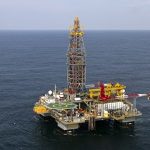The world has yet to grasp the scale of the task of removing carbon emissions from the energy system, with oil demand likely to be around the 90 million b/d level by the end of this decade, or about 10% below pre-pandemic levels, TotalEnergies CEO Patrick Pouyanne said Oct. 5.
Speaking at the Energy Intelligence Forum, Pouyanne, whose company was renamed from Total earlier in the year, warned that if the mounting calls to stop investing in new oil and gas projects were heeded, prices would “rocket to the roof,” becoming a “big issue” even for developed economies.
Underinvestment had already contributed to recent price spikes, with the rapid post-pandemic economic rebound also a factor, Pouyanne said, adding: “The global system of the planet is not designed to absorb suddenly plus 6-7% of [economic] growth.”
The oil and gas industry has, however, got the “patience” for needed energy transition investment, Pouyanne said, going on to outline the company’s rationale for broadening out its investment offering, as in a recent $27 billion deal with Iraq encompassing hydrocarbons and solar power projects intended to meet domestic energy needs.
But he reiterated that with natural decline rates of 4-5% annually at a typical oil and gas field, new hydrocarbon investment would still be needed.
“The idea that we could stop investing in oil and gas fields — if we stop investing in 2020, we leave all this resource in the ground, by 2030 the demand will still be maybe not 100 million b/d but 90 million b/d… and then the price will rocket to the roof and then even in developed countries it will be a big issue,” Pouyanne told the online event.
“People do not imagine what it means to transform the whole energy system of the planet, which is today 80% based on fossil fuels and carbon, to something with no carbon. It’s an incredible task. We have a lot of patience to manage it, but of course all that will require investment and cost,” he said.
“This transition will not be [possible] without accepting the fact that energy prices will have to reflect this huge investment that we need to do to decarbonize.”
LNG volatility
Pouyanne went on to acknowledge that demand for LNG, widely seen as a transition fuel for countries reliant on coal, may have been set back by recent high prices. But he said the switch from coal remained a “fundamental” trend and buyers could think about agreeing longer term contracts to iron out volatility.
“The LNG price is much too high. It could [make] afraid some new customers… Bangladesh, Pakistan, India — we are very active in India on LNG and we know that beyond $6/MMBtu it’s becoming tough to sell our LNG,” Pouyanne said, adding customers had been incentivized by previous “unreal” low prices.
“Having said that, I think the trend of coal to gas [switching] is more fundamental. Coal is very expensive by the way as well today, but we know that all these countries need more energy and affordable” energy, he said.
Pouyanne defended TotalEnergies’ “counter-cyclical” deal with Iraq in September, which incorporates solar investments and comes as fellow oil and gas majors have been deterred by Iraqi investment terms.
He said such investments met a fundamental need for domestic energy in a number of fossil-fuel rich countries, and investments in solar were a matter of land acquisition and thus inherently long-term in value.
Suriname prospects
He also addressed the topic of Guyana and Suriname’s emergent oil resources, saying that while a rapid oil development for Suriname would be desirable financially, the question of how to “valorize” the associated gas remained unclear.
TotalEnergies has made a number of oil discoveries offshore Suriname alongside Houston-based APA, formerly Apache, while ExxonMobil has spearheaded exploration successes offshore Guyana, where production from the Stabroek block began in 2019.
Pouyanne said a combined solution for commercializing the two countries’ gas might be appropriate, but further appraisal of the resources would first be needed.
“We would like to be able to launch as quickly as possible a first oil development in order to gain some revenues, but today the gas content of what we discovered is quite high so the question is what do we do with this natural gas. There is maybe the same point with Guyana. The domestic markets could exist, but are limited,” Pouyanne said.
“We must continue to appraise, to explore, we still have very interesting targets on both sides, and I hope at the end of 2022 we’ll have made a large inventory of all these resources and then we’ll be able to engage with the countries” on a solution, he said. “There’s no way for TotalEnergies to flare the gas. We’ll have to find a way to valorize the gas.”






